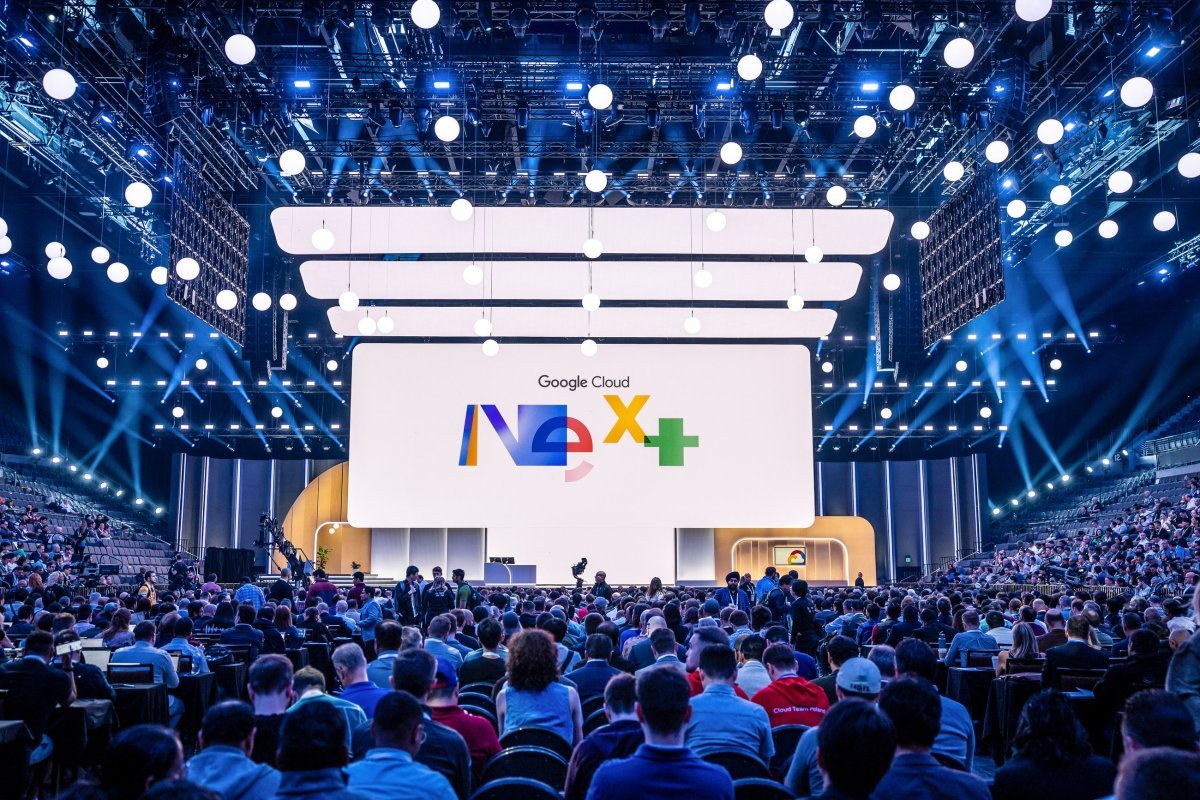This past week in Las Vegas, a crowd of 30,000 individuals gathered together, united in their desire to hear the latest and greatest updates from Google Cloud. And what they were met with was an immersive and all-encompassing focus on generative AI.
Of course, it’s important to note that Google Cloud’s primary function is as a cloud infrastructure and platform vendor. But with the overwhelming surge of AI announcements, it would have been easy to miss that fact.
“Not to downplay what Google showcased, but much like Salesforce at its traveling roadshow in New York City last year, the company barely acknowledged its core business – except in the context of generative AI, of course.”
Google revealed a range of AI enhancements aimed at helping customers optimize their use of the Gemini large language model (LLM) and increase productivity across the platform. It’s a worthy and admirable goal, and throughout the main keynote on the first day and the Developer Keynote the following day, Google provided live demos to showcase the power of these solutions.
However, some of the demos felt overly simplistic, even considering the time constraints of a keynote presentation. Most relied on examples within the Google ecosystem, but the reality is that many companies have most of their data stored in repositories outside of Google.
Surprisingly, some of the demonstrations could have been done without AI. For instance, during an e-commerce demo, the presenter called a vendor to complete an online transaction. While this was meant to showcase the communication capabilities of a sales bot, the same process could have easily been carried out by the buyer on the website itself.
Now, this isn’t to say that generative AI is without its strong use cases. It has proven to be highly effective in generating code, analyzing a body of content and providing search results, and sifting through log data to determine the root cause of a website crash. Plus, the task and role-based agents introduced by Google, designed to assist developers, creative professionals, employees, and others, have the potential to yield tangible results through the implementation of generative AI.
But when it comes to developing AI tools based on Google’s models, instead of simply adopting those already created, it’s hard not to feel that certain obstacles are being glossed over. While Google and other major vendors may make it seem effortless, the reality is that implementing any advanced technology within larger organizations is an immense challenge.
Major change is never easy.
As with any major technological leap in the past 15 years – whether mobile devices, cloud computing, containerization, or marketing automation – companies are presented with grand promises of potential gains. Yet, each of these advancements brings its own level of complexity, and large corporations tend to move more cautiously than we might think. Compared to these previous waves of technology, AI brings about a much larger and daunting task for Google and other vendors.
We’ve seen this pattern before with previous technological shifts – they are often accompanied by a lot of hype, followed by a wave of disappointment and disillusionment. Even years after their introduction, we still see large companies that haven’t fully embraced these advanced technologies, preferring to dabble or even abstain entirely.
There are many factors that can hinder a company’s ability to take advantage of these technological innovations, including organizational inertia, a rigid and outdated technology stack, or a group of corporate naysayers who shut down even the most well-intentioned initiatives. Legal, HR, or IT departments, for various reasons stemming from internal politics, often resist making any substantial changes.
Vineet Jain, CEO of Egnyte, a company focused on providing storage, governance, and security solutions, breaks companies down into two categories – those that have already made significant strides in adopting cloud technology and will have an easier time incorporating generative AI, and those that have been slow to adopt and will likely struggle.
“We talk to many ‘late’ cloud adopters who have not started or are very early in their quest for digital transformation,” Jain told TechCrunch.
In Jain’s experience, these are the companies that will need to make significant strides towards digital transformation before they can even begin to take advantage of generative AI. “These companies will need to solve those problems first and then utilize AI once they have a mature data security and governance model,” Jain explained.
It all comes down to data.
Major vendors like Google may make implementing AI solutions sound simple, but as with any sophisticated technology, what appears easy on the surface is often much more complicated behind the scenes. As I heard repeatedly this week, when it comes to data used to train Gemini and other large language models, the age-old saying rings true – “garbage in, garbage out.” And this couldn’t be more relevant when it comes to generative AI.
It all starts with data. If your data isn’t well-maintained and organized, preparing it for the training of LLMs for your specific use case will be a daunting task. Deloitte principal Kashif Rahamatullah, who leads the Google Cloud practice at his firm, was mostly impressed with Google’s announcements this week, but he recognizes that companies with unclean data will face significant challenges in implementing generative AI.
“These conversations may start with AI, but they quickly shift to the need for correcting and organizing data. Companies realize that they need to clean up their data and have it all in one central location before they can truly benefit from generative AI,” Rahamatullah said.
From Google’s perspective, the company has developed generative AI tools to simplify the process of building data pipelines that connect to both internal and external data sources. Gerrit Kazmaier, vice president and general manager for database, data analytics, and Looker at Google, spoke to TechCrunch about how these tools can significantly aid in connecting and organizing data, especially for companies that are further along in their digital transformation journey.
But for businesses similar to the ones Jain describes – companies that have yet to embrace digital transformation – these tools may present additional obstacles, even with Google’s help.
And we haven’t even touched on the added challenges that come with AI, whether it’s developing an app based on an existing model or creating a custom model. According to Andy Thurai, an analyst at Constellation Research, organizations must also consider governance, liability, security, privacy, ethical and responsible use, and compliance when implementing AI solutions. And this is no easy feat.
In attendance at GCN this week were executives, IT professionals, developers, and others who were likely hoping to catch a glimpse of what’s next from Google Cloud. But for those who weren’t actively seeking information on AI, or for organizations that aren’t yet ready to fully adopt it, the laser focus on AI may have been a bit overwhelming. It could be quite some time before these businesses, which lack digital sophistication, can truly harness the power of these technologies beyond the more packaged solutions currently offered by Google and other vendors.








